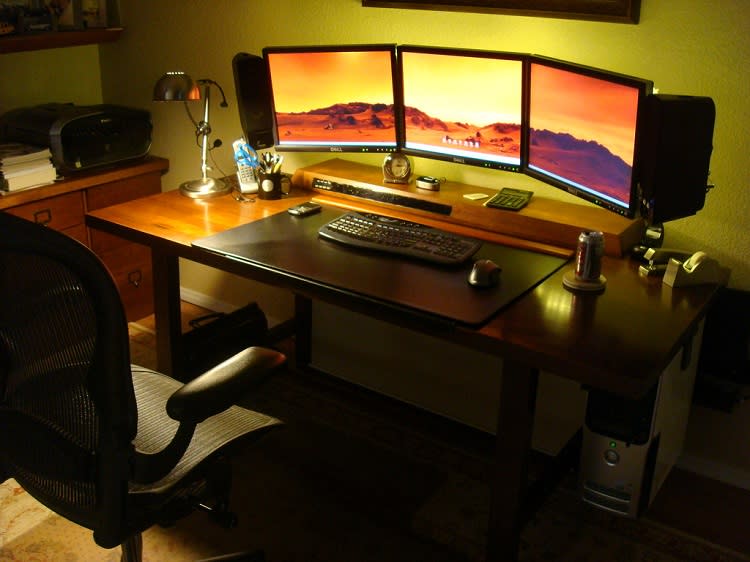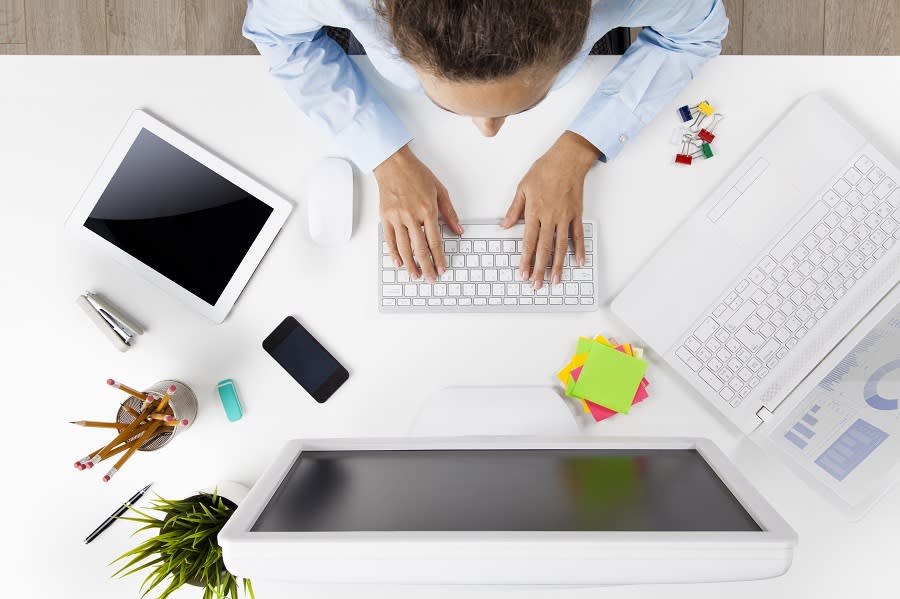What Computer Do You Really Need for Business?
Choosing your next primary business computer used to be easy. If you wanted to ditch the desk and work from anywhere, you bought a laptop. If you wanted a powerful machine capable of handling tough tasks and save a ton of files - or if you simply liked stationary comfort - you bought a desktop.
As laptops gained power and quality, the convenience of portability was an easy choice. Buyers of today are faced with a dizzying array of devices, most of them capable of carrying out tasks we would once have needed a "proper" computer for.
We can safely discount the smartphone as a primary business device - they're not big enough, powerful enough or useable enough for most freelancers or business owners.
Even tablets and two-in-ones are becoming more powerful by the day, and could feasibly be enough for at least some workers.
Putting aside leisure use for these devices and focusing purely on how they fare in the business world – and assuming the traditional laptop is the "gold standard" - here are some key questions to consider when choosing your next business computer.
Touch or Type?
Touch technology has come a long way over the last decade; the clunky, unresponsive displays found on early touchscreen models have been replaced by screens that can, to some degree, replace a traditional keyboard.
But if you've ever tried to write anything longer than an email using a touchscreen, you're more than aware of their limitations. An on-screen keyboard is smaller and more difficult to use with precision. It never displays a full keypad with all the characters and punctuation you'll need, and the keyboard takes up valuable screen space and gives no physical feedback - that satisfying sensation of knowing you've pressed a key.
Simply put, at the risk of stating the obvious, your typing speed on a touchscreen will be slower than on a physical keyboard and you're far more likely to make time-consuming and potentially expensive errors.
If you need to make a lot of keystrokes over the course of a working day - for example, a writer, virtual assistant or programmer – you can't get by without a physical keyboard.
A tablet can be a useful extra device to keep you connected while you're out an about, but cheaper tablets are more toys than tools. Even the high-end models are designed with consumers, not creators, in mind.
For the overwhelming majority of us, even the best tablets on the market could never serve as a primary workstation.
But what about a tablet with a keyboard?
Can a two-in-one be a genuine business device?
Nestled between the tablet and the laptop is a relative newcomer to the market quickly gaining popularity, the two-in-one. Essentially these are tablets with a detachable or fold-away keyboards and, as the name suggests, they are one item that can be two things (laptop and tablet).
Many of them are still very much aimed purely at leisure use; they're not, and don't pretend to be, business machines.
But the HP Spectre, Microsoft Surface Pro, Samsung Galaxy TabPro (even tech giants can't trademark the word "pro"), Lenovo Yoga and a handful of others are marketed as, and look like, devices that are as suitable for work as they are for play.
These top-end machines all boast decent-to-good processors (some better than others), relatively large screens (again, some bigger than others), front-facing cameras and, if you're willing to pay for it, an acceptable amount of storage.
On the downside, the space-saving keyboards would best be described as acceptable, rather than superb – some are pretty damn good, but none of them can quite match a good laptop keyboard for pure productivity. They're enough to get the job done, but many are tricky to use effectively and some lack reasonably sized trackpads.
Some two-in-ones lack sufficient USB ports, and they tend to be on the expensive side for a device of their capabilities, at least in relation to laptops.
Going back to the positives, two-in-ones are usually a little lighter than laptops, making them especially handy for workers who rarely stay in one place for long. Furthermore, the ability to switch to tablet mode when space is at a premium - say, on public transport - will be appreciated by highly mobile workers.
So can a top two-in-one replace a laptop? Maybe the best ones really can. The question you need to ask yourself is this: do you really need the tablet function?
If you think it'd come in handy, a two-in-one could be right up your alley.
If you don't, there's very little point in getting one.
A two-in-one will always be a compromise between its two forms, and if your working day will revolve entirely around the laptop function, you'd be better off with a laptop. The consumer-focused stuff is nice to have, but in terms of productivity, a purpose-built machine will always win the day.
So if you don't really need a two-in-one, you'd be better off spending a little less money on a slightly less-portable but more useable laptop. Or if it's comfort or power you seek, perhaps that resolute old dinosaur of computing - the desktop - would be more your style.
Desktop? But it's 2016...

Image credit: Andrew Flynn | Flickr
Desktops have caught a lot of flak over recent years, but they continue to be built and sold because they can still do things their more portable, trendy, and beautiful cousins cannot.
True, they have a massive downside in tying the user to a desk, so if you need easy portability, the debate ends here.
But if you do all your work in one place - an office, perhaps, or in a designated workspace within your home - desktops offer significant advantages in a number of areas.
The first is cost; a desktop will always be cheaper than an equal-specification laptop, both in original purchase price and for repairs. Chances are you could probably fix or update a desktop yourself, if you knew what was wrong with it. Tightly-packaged laptops require the hands of a skilled professional.
Desktops tend to have longer lifespans, too, and they can easily be upgraded to a higher specification without the need for a whole new machine.
And on the subject of specification, there comes a point where even the most expensive laptop cannot compete with a desktop. The wide expanse of space within the tower and easy cooling of hard-working components lets you pack in a lot of useable power if you need it, and many business users do.
A further appeal of a desktop lies in comfort. You can choose exactly the right monitor (or monitors) for your needs (including size, which is very important to some), and place it at exactly the right height. You can pick the keyboard you want, and if you decide you don't like it you can just swap it for another one.
Some users prefer mice to trackpads, and the idea of setting up a permanent, comfortable workstation holds a lot of appeal to many professionals.
Going back to that major weak point - with a desktop, unless you buy a second device (or one of these ), you're chained to a single location. For some of us, that one's a deal-breaker.
Final thoughts
You know your needs better than I do, but for most of us the good old laptop is the best option. They give some ground to desktops in terms of price and performance, but going back to what we said right at the start, today's quality laptops can do just about everything.
That said, if you need a tablet function, a two-in-one is worth serious consideration. After a slow start, the best of the bunch are starting to poke their noses into the "proper" laptop market.
And the desktop? Ignore the flak they get, because they hold more appeal for business than they do for leisure. If you don't need to move around when you work, a nice, comfortable desktop setup is a very worthy competitor to any laptop; and if you need speed, power, and tons of memory, it's probably your best option.

